‘Everybody should know how to swim’: QU swimmers giving back to community with lessons for kids
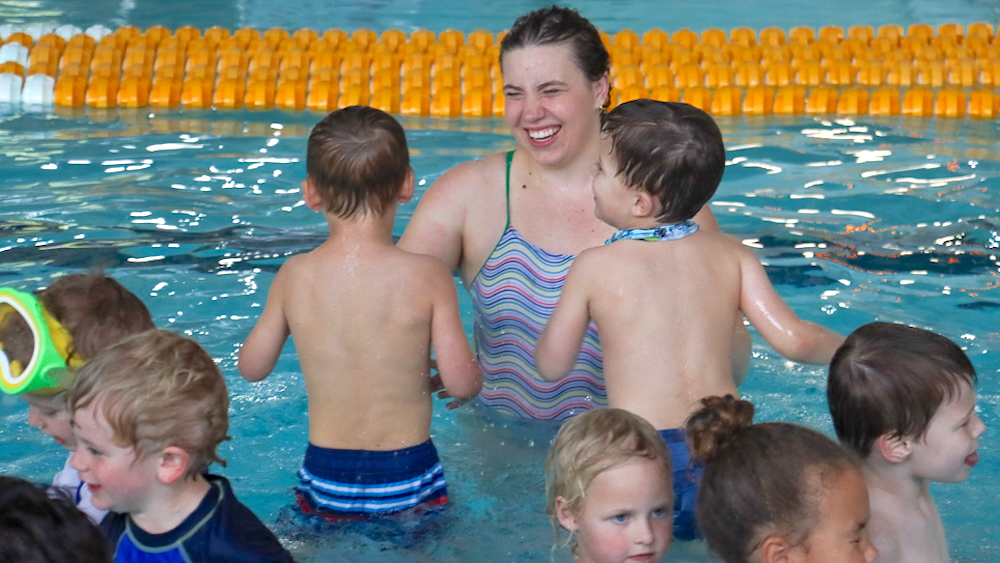
QUINCY – Twice each week since late March, more than 40 boys and girls ages 4 and up arrive at the Quincy University pool for an hourlong swimming session.
Some of the youngest ones fear the water at first and must be coaxed into the pool. Others are putting their faces in the water and blowing bubbles. A group at another station is learning to kick their legs and move their arms.
Still others are swimming the length of the pool, then giving a high-five to a parent sitting on bleachers that ring three sides of the pool as they walk back to the other end to do it all again.
Most of all, there is an abundance of laughter and smiles.
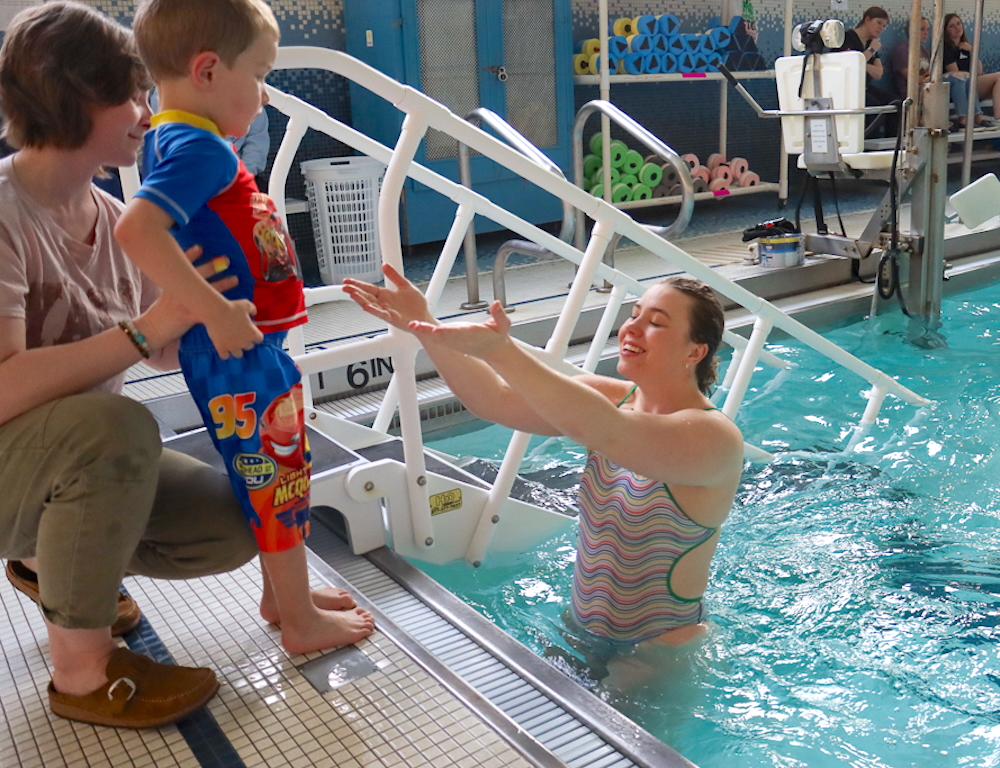
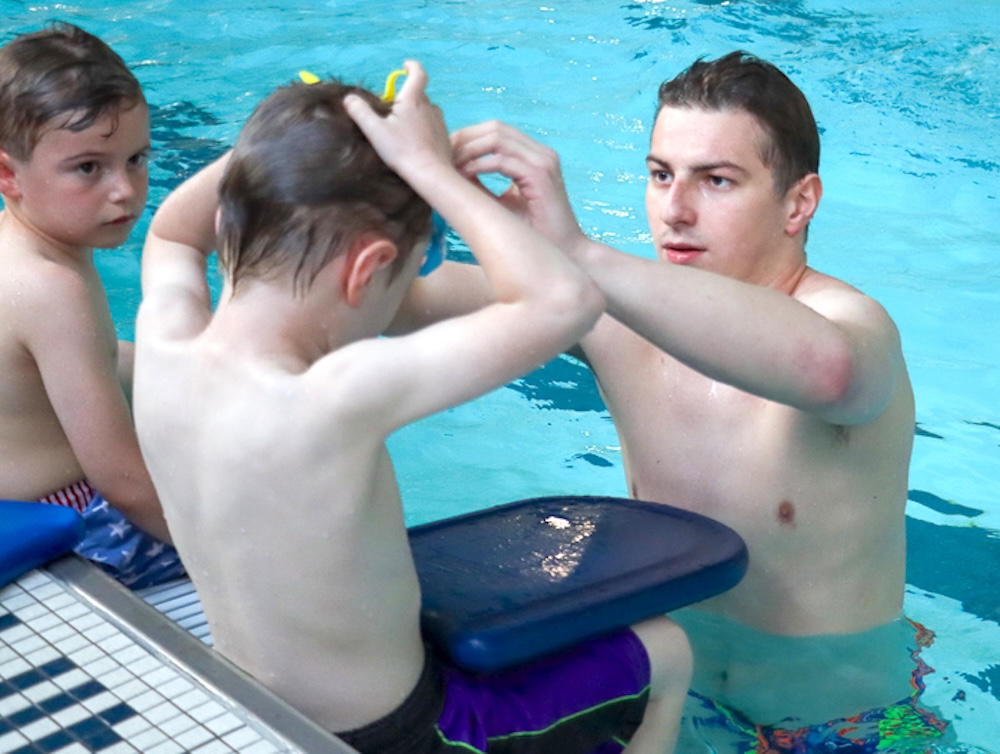

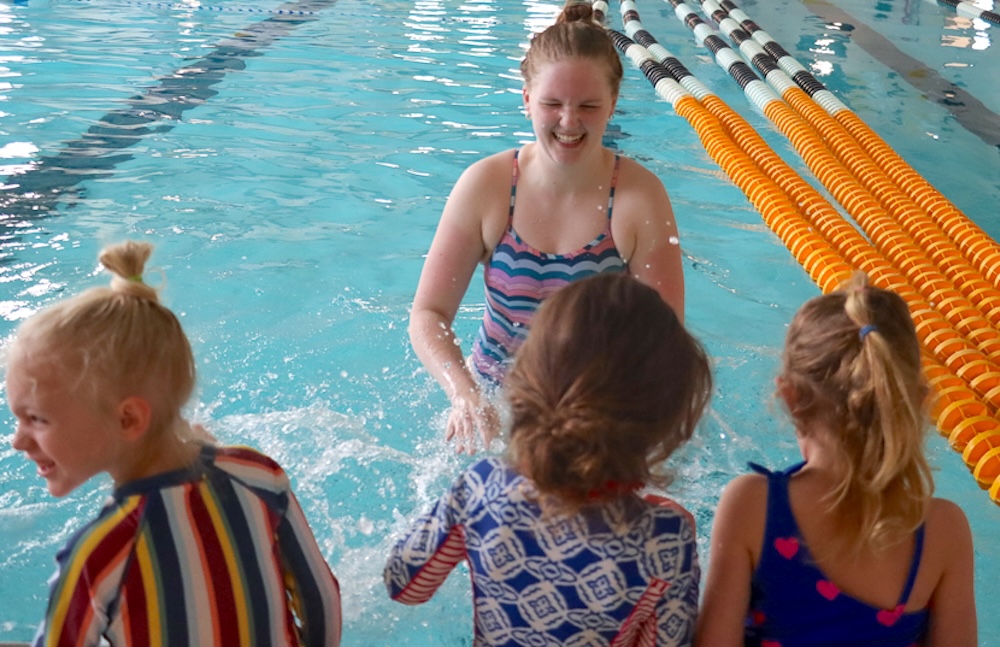
“I see a lot of growth,” said Grant Owen, one of the instructors. “We had one kid last session who would barely put his face in the water. By the next session he was doing dives at the block and doing streamlines and flip turns and kicks.
“It’s a good feeling knowing what you’re doing is making a difference. Teaching kids how to swim is very important.”
The QU men’s and women’s swim teams have been providing group and individual lessons for the last three years, first in the fall and now in the spring.
A dozen rotating team members like Owen serve as instructors. Another four act as lifeguards and two – Claire McDaris and Chantal Tiesinga – coordinate activities in the lower level of the Health & Fitness Center.
The lessons are divided into two three-week sessions. Swimmers spend an hour in the pool twice each week. There are five stations so youngsters can be grouped with their skill level, with advancing to the next station the goal. The cost is $110 per swimmer, with funds going to the QU swim teams.
“It has grown every year,” QU coach Bryan Christiansen said. “I like a fundraiser that provides a service to the community, not just selling wallpaper. We have received a lot of good feedback from parents. The kids are having fun, and we have a lot of engaged instructors. I give them a lot of credit for what they’re doing.
“We live on a river. Everybody should know how to swim.”
The QU program provides another avenue for swimming instruction. While the Kroc Center offers a variety of lessons from infants on up and Sheridan Swim Club is a destination for more advanced swimmers, the need has outpaced supply in recent years since the closing of the Quincy YMCA pool.
Quincy attorney Drew Schnack has been involved in swimming programs locally for decades. His grandson enrolled in both QU sessions this spring, and Schnack has been impressed with what he has seen.
“The (QU) kids are doing a fantastic job,” he said. “They’re not babysitters or playmates. They don’t act like, ‘Hey, look at me, I’m a star college swimmer.’ They’re in the water the whole time covering all these bases. There’s no wasted time. You can literally watch (young swimmers) progress.”
Like his teammates, Owen, a junior from Wentzville, Mo., enjoys engaging with kids. He often uses analogies to get a point across. For instance, instead of telling kids to swim in the middle of the pool, he will tell them to be the jelly in a peanut butter and jelly sandwich.
“They kind of laugh at some of the things I say, but then they’re like, ‘Oh, that makes sense,’” he said. “I try to put it in words they understand. They’re not going to understand what a flip turn is. We’re trying to find ways to help them learn.
“I love working with kids. You want to get them to smile as much as you can and make them feel good about themselves when they’re doing something they haven’t done before. That encourages them to do more and to have a passion for swimming.”
Tiesinga, a junior from The Netherlands, and McDaris, a sophomore from Oklahoma, wear several hats during each hourlong session.
They make sure the six-lane pool is prepared and staffed, check in swimmers, assign the appropriate number of instructors for each skill level so there’s little down time, help determine placement, monitor activities and answer any questions parents might have.
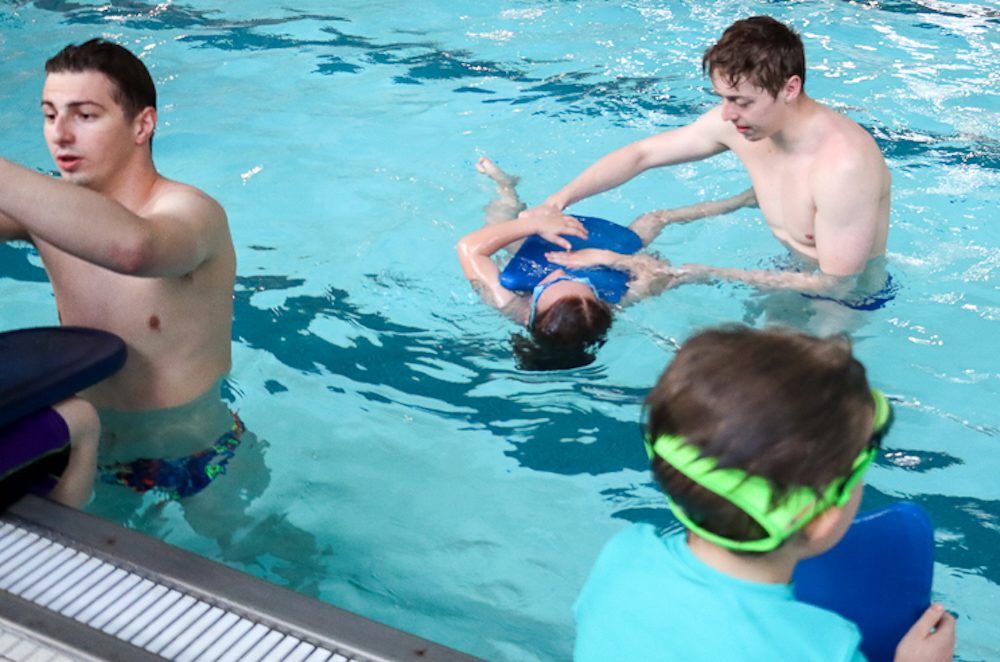
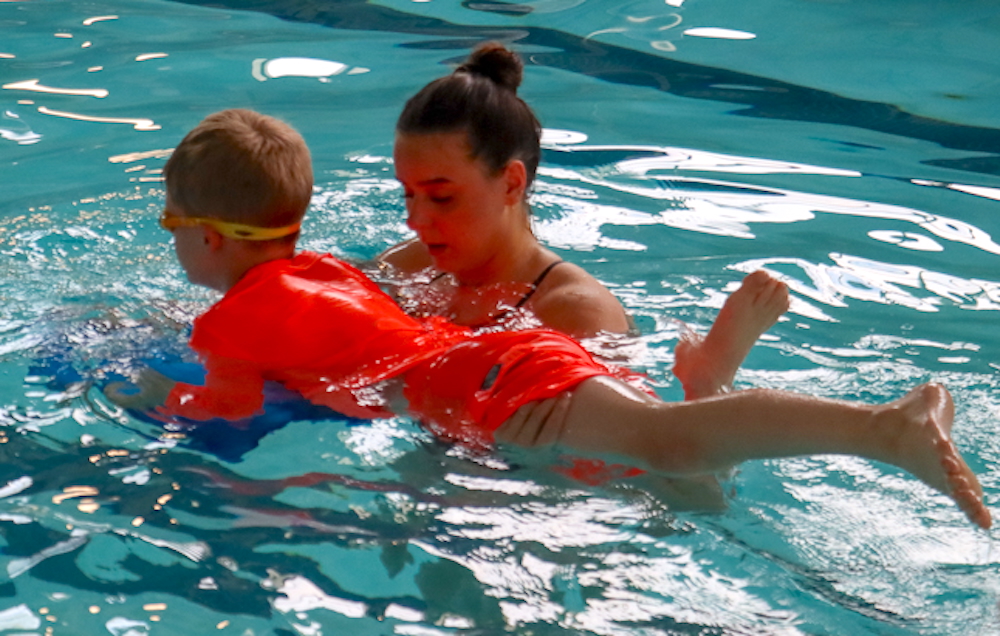
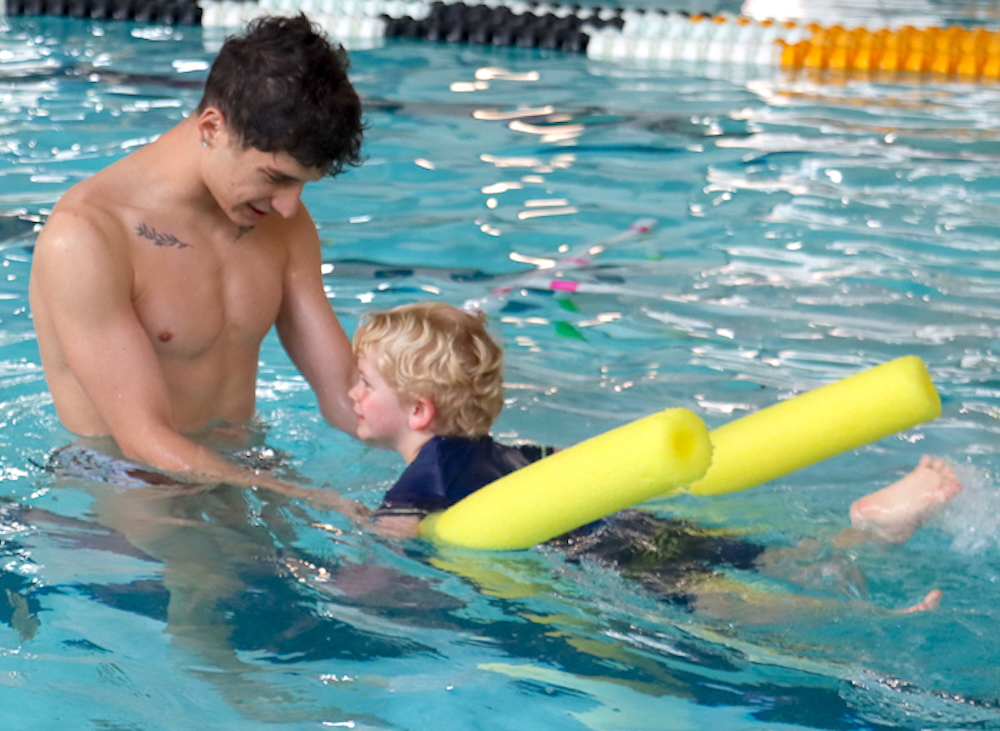

The operation moves smoothly.
“We want to make sure kids are getting the proper attention to not only teach them skills but for them to be able to enjoy themselves while they learn,” Tiesinga said. “We want a good (student-to-instructor) ratio to be able to teach and also to make sure everyone is safe.
“There are a lot of kids who come in and don’t want anything to do with the water at first. That first time hopping into the water can be scary but showing them it’s not scary and showing them what other kids in the group are doing encourages them. I think at the end of our sessions most of the kids leave with a good experience. It makes me happy to see how we’re contributing to their swim skills.”
Schnack views the program as a win-win for the community and the school. He would like to see it expand in the future, if possible, given its success.
“It’s a two-way street,” he said. “It’s great for the community for kids to get a taste of swimming with summer coming on, and it’s a good thing for the college. It’s an opportunity to get the (QU) program out in the community.
“It’s clearly working. And the kids are having fun.”
Miss Clipping Out Stories to Save for Later?
Click the Purchase Story button below to order a print of this story. We will print it for you on matte photo paper to keep forever.

